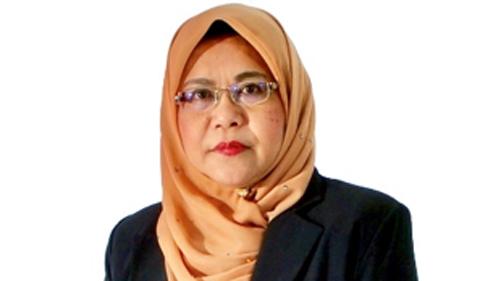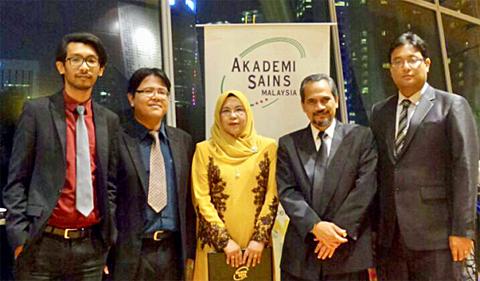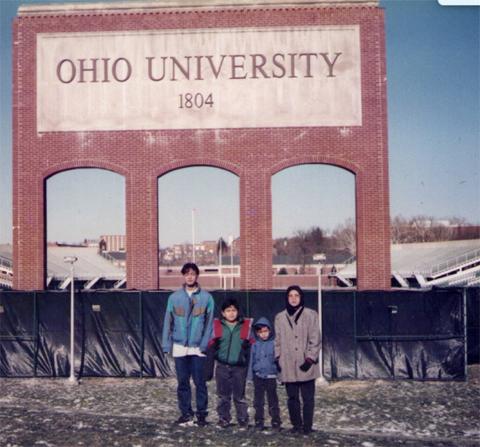
Notable Alumni | Zainuriah Hassan Pioneers Scientific Advances in U.S., Malaysia

Editor’s Note: The College of Arts & Sciences Notable Alumni Awards honor alumni for broad career accomplishments, commitment to community service, and valuable contributions to Ohio University and the College of Arts & Sciences.
Zainuriah Hassan ’98 Ph.D. in Physics
Dr. Zainuriah Hassan was an important member of the wide band gap semiconductor effort in condensed matter physics during her time at Ohio University. Now she is a leading researcher in Malaysia, leading an effort to develop high efficiency, high lumen white LEDs in a key technology transfer for her nation.
She pioneered many of the scientific advances that would be the center of the nitride work at OHIO. Instrumental in the installation and operation of the metalorganic chemical vapor deposition (MOCVD) reactor, she was the first to work on GaN and AlN at OHIO.
At present, she is the Director of the Institute of Nano Optoelectronics Research and Technology and a full professor at Universiti Sains Malaysia.

At USM, Hassan was formerly the Director of the Centre for Research Initiatives in Natural Sciences (2013-2015), Dean (2010-2012), Deputy Dean-Academic and Student Development (2009-2010), and Chair of the Engineering Physics Program (2007-2009).
She also was a Visiting Research Scholar under the Fulbright Program at the Department of Electrical and Computer Engineering at University of Minnesota in 2004-2005.

Leading New Scientists in Malaysia
After obtaining her Ph.D. in Physics from the College of Arts & Sciences at Ohio University in August 1998, Hassan returned to Malaysia and was the only person in the country at that time doing research on GaN (III- Nitrides), the wide band gap semiconductor material that she worked on for her dissertation.
In 2002, she obtained a grant worth RM 11 million (about $3 million) for work on fabrication of III-nitrides and organic materials for blue light emitting device applications. With that grant, she successfully set up an advanced laboratory—named NOR for Nano-Optolectronics Research and Technology Laboratory—at School of Physics, Universiti Sains Malaysia.
Now the NOR laboratory has received accreditation as a Center of Excellence in Research, a status awarded to the Institute of Nano Optoelectronics Research and Technology by the Ministry of Education in 2015.
To date, Hassan has obtained many research grants to work on GaN and other wide band gap semiconductor materials, and she has trained many students in this field to provide local talents for Malaysia. She has received several prestigious awards and recognition from her country, including being named among the 2013 Top Research Scientists Malaysia and elected as a Fellow of the Academy of Sciences Malaysia in 2016.
“I am very satisfied with the progress and success of the research field that I have started in Malaysia,” Hassan says. “Currently, I am involved in the national project entitled “GaN on GaN,” which is funded by the Malaysian government for five years (2015-2020) through the Economic Planning Unit for a total funding of RM 75 million (about $18 million).
“This project is a technology transfer program from the University of California Santa Barbara to Malaysia with the goal to produce high efficiency and high lumen Malaysian-made white LEDs, which involves scientific collaboration between academia and industry in Malaysia. Due to the vast potentials of GaN in E&E sector, GaN technology has been identified as the next emerging technology in Malaysia with applications that are relevant for Industry 4.0.”
OHIO Memories
Hassan says it was both challenging and exciting to be a single mother of three young children while pursuing her Ph.D.

“My children are all in their 30s now and are successful in their respective careers. We visited many places in the U.S. and Canada during school holidays, and sweet memories of those days still linger till now,” she says.
“I am forever very grateful to Professor Martin Kordesch for giving me the best research area to work on which has strong impact in many sustainable technology applications till now.”
